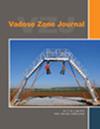确定地下水补给量以量化非饱和源区PFAS的总量排放
IF 2.8
3区 地球科学
Q3 ENVIRONMENTAL SCIENCES
引用次数: 1
摘要
土壤-地下水污染物总量排放(Md)是确定受全氟烷基和多氟烷基物质(PFAS)影响的地点源强度的权威度量,并且越来越多地被报道。然而,在代表性空间尺度上对地下水补给的准确估计对于定量估计Md至关重要,迄今为止,尽管有大量可用的文献,但相对于PFAS在非饱和带源区内特定的分配和保留过程,它得到的关注相对较少。本综述的目的是总结Md的概念,因为它适用于PFAS影响的地点,提出标准化的术语,并整理已发表的关于地下水补给的文献,以作为实践者水平的实用方法总结。关键的是,主要目标是减少与给定站点管理应用(即数据质量客观过程)相称的补给(以及Md)估计的不确定性。因此,根据具体的项目要求和场地条件,我们提出了一个增加成本、复杂性和确定性的分层系统,并根据这些因素为每一层推荐适用的充值方法。最后,提出了一个基于Md概念的PFAS影响源区域评估框架。本文章由计算机程序翻译,如有差异,请以英文原文为准。
Determining groundwater recharge for quantifying PFAS mass discharge from unsaturated source zones
Soil‐to‐groundwater contaminant mass discharge (Md) is the authoritative metric defining source strength at sites impacted by per‐ and polyfluoroalkyl substances (PFAS) and is increasingly being reported. Accurate estimates of groundwater recharge at representative spatial scales, however, is critical to quantitatively estimating Md, which to date has received comparatively little attention relative to PFAS‐specific partitioning and retention processes within unsaturated zone source areas despite a plethora of available literature. The objective of this review is to summarize the concept of Md as it applies to PFAS‐impacted sites, present standardized terminology, and collate published literature on groundwater recharge for a practitioner‐level summary of practical methods. Critically, the primary aim is to reduce uncertainty in recharge (and, thus, Md) estimates commensurate to a given site management application (i.e., the data quality objective process). Therefore, we propose a tiered system of increasing cost, complexity, and certainty depending on specific project requirements and site conditions and recommend applicable recharge methods for each tier based on these factors. Ultimately, a framework is presented for the assessment of PFAS‐impacted source areas based on the concept of Md.
求助全文
通过发布文献求助,成功后即可免费获取论文全文。
去求助
来源期刊

Vadose Zone Journal
环境科学-环境科学
CiteScore
5.60
自引率
7.10%
发文量
61
审稿时长
3.8 months
期刊介绍:
Vadose Zone Journal is a unique publication outlet for interdisciplinary research and assessment of the vadose zone, the portion of the Critical Zone that comprises the Earth’s critical living surface down to groundwater. It is a peer-reviewed, international journal publishing reviews, original research, and special sections across a wide range of disciplines. Vadose Zone Journal reports fundamental and applied research from disciplinary and multidisciplinary investigations, including assessment and policy analyses, of the mostly unsaturated zone between the soil surface and the groundwater table. The goal is to disseminate information to facilitate science-based decision-making and sustainable management of the vadose zone. Examples of topic areas suitable for VZJ are variably saturated fluid flow, heat and solute transport in granular and fractured media, flow processes in the capillary fringe at or near the water table, water table management, regional and global climate change impacts on the vadose zone, carbon sequestration, design and performance of waste disposal facilities, long-term stewardship of contaminated sites in the vadose zone, biogeochemical transformation processes, microbial processes in shallow and deep formations, bioremediation, and the fate and transport of radionuclides, inorganic and organic chemicals, colloids, viruses, and microorganisms. Articles in VZJ also address yet-to-be-resolved issues, such as how to quantify heterogeneity of subsurface processes and properties, and how to couple physical, chemical, and biological processes across a range of spatial scales from the molecular to the global.
 求助内容:
求助内容: 应助结果提醒方式:
应助结果提醒方式:


